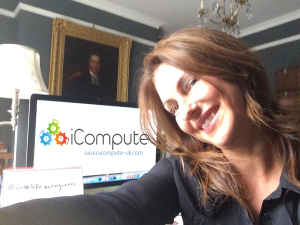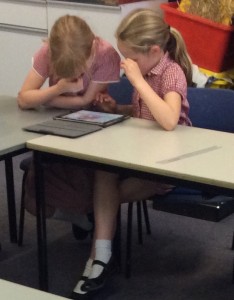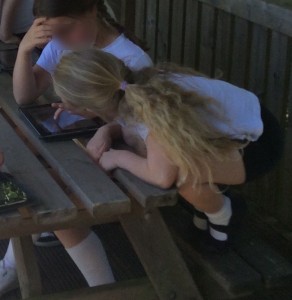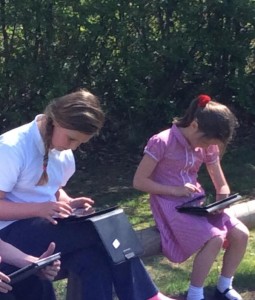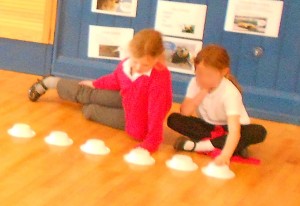Build and Code with LEGO™ WeDo
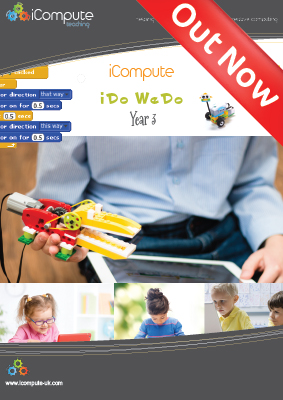 This week sees the launch of iCompute’s new six week programming unit for Year 3 and 4-5 week unit for Year 4 which uses LEGO™ WeDo to teach children how to program robots and models in primary computing lessons.
This week sees the launch of iCompute’s new six week programming unit for Year 3 and 4-5 week unit for Year 4 which uses LEGO™ WeDo to teach children how to program robots and models in primary computing lessons.
This helps schools address the controlling physical systems objective of the National Curriculum for Computing at Key Stage 2.
What is LEGO WeDo?
Lego WeDo is a fantastic opportunity for children to bring the physical world to life through code. They build models using the bricks they know and love and then program them interact with the world around them!
Using robotics promotes interest in science and engineering, as well as computer science and helps develop motor skills through model building. Mechanisms, built by and ultimately designed by, the pupils themselves set computer programming in a meaningful context. Children learn more quickly when a model executes a program, physically, right before them.
The robotics elements of LEGO WeDo include motors and sensors. Our new units do not require the full educational LEGO WeDo sets to be bought. Schools that already have plenty of bricks and parts can simply buy the robotics parts that will enable models to move, sense and interact with the physical world.
Robotic Parts
LEGO WeDo has two versions 1.0 and 2.0. Our units provide support for both and the principle robotic parts remain the same at their core (albeit with enhanced features for 2.0).
- The Hub: The WeDo hub connects models to your device. You can connect up to two sensors (motor, distance sensor, or tilt sensor)
- The Motor: When connected to the hub, the motor can be programmed to turn on/off. It can also be programmed to adjust power, direction and duration
- The Distance Sensor: The distance sensor can detect how far away an item is in front of it
- The Tilt Sensor: The tilt sensor detects how far it’s tilted from left to right.
You can also connect and program LEGO Power Function lights which do not come with WeDo packs as standard but can be bought on their own and connected to the hub too.
As already mentioned, you can buy the robotic parts separately if you have plenty of LEGO bricks; however it is still possible to pick up education sets of WeDo 1.0 at a fraction of the price of WeDo 2.0. Search online for LEGO™ Education WeDo Construction Set 9580 (make sure it’s the construction set you are buying). I managed to buy 6 sets of WeDo 1.0 at £70 each compared to £150 each for LEGO™ Education WeDo 2.0 Core Set 45300.
Programming LEGO™ WeDo
iCompute uses MIT’s Scratch to program models. LEGO WeDo does have it’s own software that comes as part of the kit, but I don’t feel it offers the same opportunities for enhancing physical programming through storytelling so have chosen to use Scratch instead.
There are two versions of Scratch: 1.4 and 2.0. Scratch 1.4 is an offline editor that you download and use without the need for web access. Scratch 2.0 is available as both an online and offline version. Regular readers will know that I prefer 1.4 for primary aged pupils as the interface is cleaner and the debugging options are better. Scratch 2.0 however does allow models to be connected to tablets, as well as computers. You can use both versions of WeDo with Scratch 2.0, however you need to install a device manager and extension in Scratch 2.0 for them to work.
The teacher guides contained within the unit provide comprehensive guidance on the options and their respective setups.
Using Scratch and LEGO WeDo enables pupils to create some amazing models and stories to accompany them.
What Pupils Can Do with LEGO™ WeDo and iCompute
- Programming, using software , designing and creating working models
- Using the software to acquire information
- Using feedback to adjust a programming system output
- Working with simple machines, gears, levers, pulleys, transmission of motion
- Measuring time and distance, adding, subtracting, multiplying, dividing, estimating, randomness, using variables
- Doing narrative and journalistic writing, storytelling, explaining, interviewing, interpreting
- Design: Use STEM principles to explore Science, Technology, Engineering & Mathematics and design models
- Build: Improve motor function, communicate and collaborate with others in building working models and robots
- Program: Create animated stories, and program models to interact with the story & physical world
- Digital Literacy: Create factual and imaginative animations and narratives that explain, interpret and tell stories
- Test : Use physical output as feedback to to detect errors easily
- Debug: Correct errors found when models don’t behave as expected
- Evaluate: Critically analyse work and that of others and discuss what is good, or not so good, about them
- Improve: Revisit models and code then cycle through this process from ‘Design’ onward to make things better
Save
Save
Save
Save
Save
Save
Save
Save
Save
Save
Save
Save
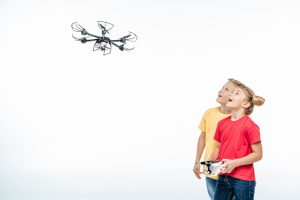





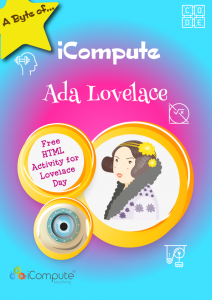
 This week sees the launch of
This week sees the launch of 